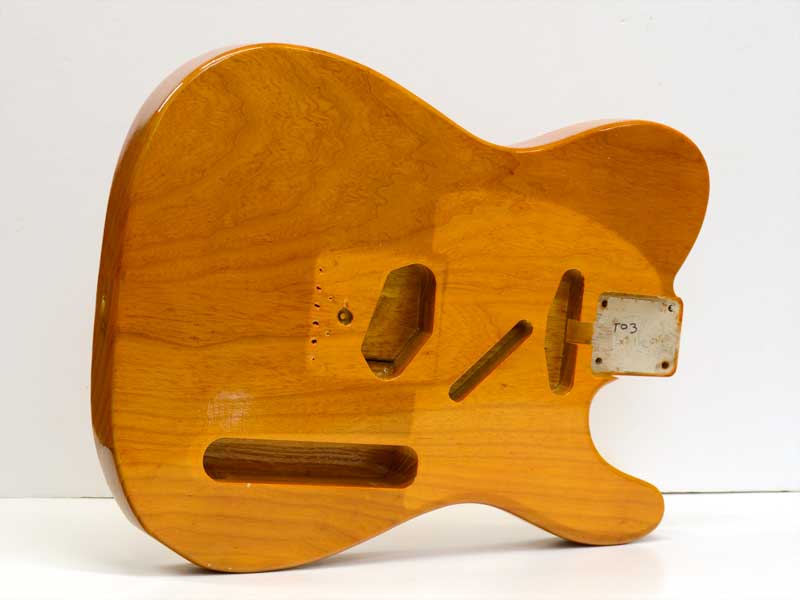A potentiometer (pot) is a variable resistor.
The
pot's value denotes the maximum resistance it can exert when turned to one
extreme. The other extreme is essentially the same for all pots - zero resistance. With no resistance the signal will naturally want to ground itself. As the pot turns from 0 to 10 more resistance is added and more of the signal will continue down the circuit.
However, simply having a pot in the circuit will, by design, add some resistance, which is why there are "no load" pots and wiring schemes that take the pot out of the circuit completely. (50s Esquire wiring has the bridge position as direct output, bypassing both volume and tone pots producing a noticeably brighter output than a tone pot on 10.)
The general rule of thumb is that a lower value pot will make the pickup sound darker. That's why the often-quoted mantra is 250k for single coils and 500k for humbuckers.
The higher the number, the more high frequencies are allowed through the circuit. All other factors being equal, 500k pots give a brighter tone than 250k.
The choice of which value pots to use is of course dependent on personal preference, and the pickup used. Some guitarists prefer very bright single coils and would therefore perhaps prefer 500k pots to allow more of the highs through. Gibson for years built their P90 guitars with 500k volume pots and 250k tone pots.
Things get a bit trickier if you have a humbucker and single coil in the same guitar, but there are ways round that.
You can run 500k pots for the humbucker and add a 270k resistor to the bridge pickup connection on the switch grounded to the volume pot as on Fender's American Telecaster H/S
With a volume control you are decreasing the signal that's allowed to go to ground as the pot is turned from 0 to 10, resulting in increased volume. With a tone control you are increasing the amount of LOSS to the higher frequencies as the pot turns from 10 to 0, resulting in a darker, bassier tone. The tone pot is connected in parallel with the volume pot with a capacitor, and another terminal connected to ground. When the tone pot is turned so that there is maximum resistance across the capacitor (knob at 10 or tone fully on/open), almost no signal is lost, and the effect is nearly negligible. As you turn your tone down, the higher frequencies will be shorted to ground much faster than the lower frequencies, which pass relatively unhindered to the output jack.
The Murky World of the Taper
Taper refers to the way in which the pot acts as the knob is turned from 0 to 10.
The tapers commonly found in modern guitar pots are known as Linear and Logarithmic or Audio.
From the name it would seem obvious that we would want Audio Taper for guitars, but it isn't set in stone.
Audio and Linear taper pots have the same total resistance but differ in what position of rotation the pot will reach 50% resistance. Linear pots will reach 50% of their total resistance at the 50% rotation point. Audio taper pots will decrease most of the resistance in the last 50% of the rotation, so generally they will have 10-15% resistance at 50% rotation.
Since the human ear does not hear in a linear fashion, Audio/Log can appear to have a more effective change at higher volumes with little change from 0 - 50% rotation. Great for gigging musos who want to quickly roll off the volume to clean up their sound. If you need more control at lower volumes, a linear taper may be preferable as a volume control as volume increases more from 0 - 50% rotation.
You will find many differing opinions on which is better, but one thing on which nearly everyone agrees is that Linear taper is not the best option for tone pots.
Most manufactures use either Audio/Log taper pots for both volume and tone or Linear for volume and Audio/Log for tone.
It is down to your personal preference and how you use your guitar's controls - if you like to do wah wah swells, a linear tone pot might just be for you!
The murky world of pot tapers can be summed up quite
simply:
Linear taper = Volume
Audio/Logarithmic taper = Volume or Tone
Pot Codes
You will often see pot taper referred to with a code, A or B. Alpha uses the taper codes Audio/Logarithmic (A) and Linear (B). We use the same code as well as the actual taper description Log/Lin.
CTS uses the taper codes Audio/Logarithmic (A) and Linear (D). CTS Guitar Series pots also have numerous other codes for different tapers; the B taper is 15% Audio taper. CTS will stamp pots with whatever a customer requests so the part number on the back of a pot may not have the same codes as CTS taper values.
When referring to CTS pots, it is best to stick to using the terms Linear and Audio/Logarithmic.
Just to confuse matters even further, European codes are reversed (B for LOG, A for LIN), and vintage pot codes used A for Linear and C for Audio/Logarithmic.
Don't get too hung up on the pot codes - unless you are using old pots, it will probably never be an issue.
Tolerance
Tolerance refers to how much variance there can be from the specified value. Industry standard is 20%, so a 250k pot can read as high as 300k and as low as 200k. Unless otherwise stated pots are assumed to be 20% tolerance.
Please note that I do not offer a pot matching service.
Have you seen ...
Categories
Information
Manufacturers
Useful Links
- Home ::
- Potentiometers
Potentiometers
Bestsellers
Specials [more]

Aged Translucent Tinted Clear Nitro Swamp Ash Telecaster Body
£335.00 £300.00Save: £35.00 off

